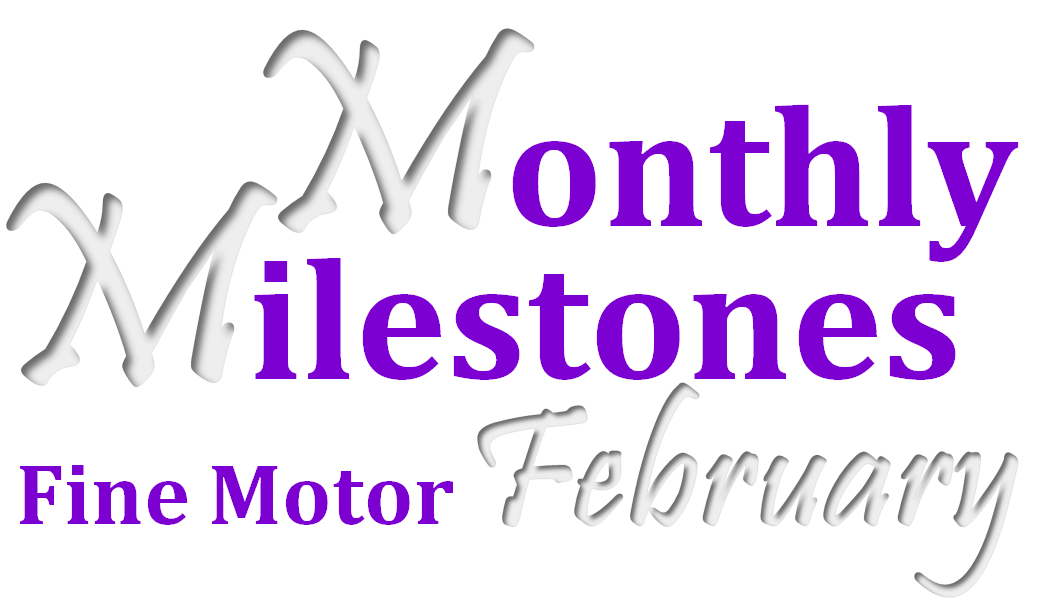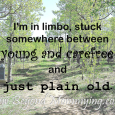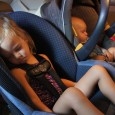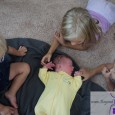I’ve already gone over the basics of fine motor skills and development and shared a printable chart to track a child’s general fine motor progress in the first year. But there is sooo much more to fine motor development in that first year!
One of my most favorite books I’ve ever read about pregnancy, birth, labor and babies is Birth Day by Mark Sloan M.D. The book, which covers the history of childbirth, is a memoir of Dr. Sloan’s time in the delivery room and touches on topics including pain relief, cesarean birth, support in the delivery room, as well as an overview of the newborn baby as it adapts to the “real” world. And the part that sticks out most in my memory of reading this book is the 2nd chapter which describes in detail the first five minutes after a baby is born.
Dr. Sloan describes the physical changes a baby undergoes as s/he emerges from the wet, warm environment of his/her mother’s belly into the cold, loud, bright world we live in. The instant changes in his/her lungs, heart, blood flow, sensory system, etc and their adaptation to survival outside mommy.
 I’ve always been fascinated by the newborn reflexes. Some which seem so arbitrary like the moro/startle reflex in which babies will throw their arms out wide and sometimes yelp at a loud sound, or the plantar, placing and stepping reflexes in a baby’s feet. They seem so arbitrary, why do even newborn try to step when their feet are placed on a surface? But Dr. Sloan does a fantastic job of describing exactly why these things occur and how they have helped our species survive (they were primitively used to help newborns stay close to their mothers and get food).
I’ve always been fascinated by the newborn reflexes. Some which seem so arbitrary like the moro/startle reflex in which babies will throw their arms out wide and sometimes yelp at a loud sound, or the plantar, placing and stepping reflexes in a baby’s feet. They seem so arbitrary, why do even newborn try to step when their feet are placed on a surface? But Dr. Sloan does a fantastic job of describing exactly why these things occur and how they have helped our species survive (they were primitively used to help newborns stay close to their mothers and get food).
I’ve yet to experience the phenomenon of a baby “crawling” to his/her mother’s breast after birth as I’ve seen described in books (maybe I can make it happen for this baby) and while it may seem more like a gross motor reflex/reaction, it is also very much a fine motor reflex. The babies are attracted to the smell of their mother’s milk (colostrum really) and have the innate drive to get it. But how do they know where to find it, certainly smell can’t be enough, right? Well, those big “bulls-eye” nipples exist for a reason, even with their extreme near-sightedness, they can easily spot the dark patch that is the mother-load (of milk)and given enough time, they will get there on their own.
 This first journey from belly to breast is one of the first fine motor coordination efforts of seeing something and getting it in their mouth. We most often hear about “hand-eye” coordination which helps older babies and toddler complete tasks like puzzles and shape sorters but the eye-mouth coordination rapidly develops in the first year. A brand new baby might try to get a toy in their mouth (see Sugarplum at around a month old) but is rarely successful. But over time they get better at it and within a few months many are pros.
This first journey from belly to breast is one of the first fine motor coordination efforts of seeing something and getting it in their mouth. We most often hear about “hand-eye” coordination which helps older babies and toddler complete tasks like puzzles and shape sorters but the eye-mouth coordination rapidly develops in the first year. A brand new baby might try to get a toy in their mouth (see Sugarplum at around a month old) but is rarely successful. But over time they get better at it and within a few months many are pros.
So what other fine motor skills can be expected to be seen and developed in the first year of a baby’s life? In the first year, children will begin to:
Between 0-3 months:
- Uses grasp reflex to clench small objects when placed near backs of fingers
- Swipe at toys
- Grasp objects in hand
- Holds hands together
- Open hands when resting
- Reach for objects with both hands
- Holds objects for 10-15 seconds before unintentionally dropping
- Looks at and explores objects placed in hands
Between 4-6 months:
- Grasp and release objects
- Shakes and plays with rattles and other small toys for several minutes
- Transfer items from one hand to another
- Opens hands, plays with fingers and puts hands in mouth
- begin finger feeding
- Reaches towards objects and sometimes hits them
- Begins raking grasp to pick up small objects
Between 7-9 months:
- Holds one object and takes another
- Grasps and transfers items between hands
- Shakes rattles and bells
- Lines up objects in opposite hands
- Holds, bites, and chews crackers, cookies, etc.
- Begins to use pincer grasp to pick up tiny objects (forefinger and thumb)
Between 10-12 months:
- Begins to use index finger to point, poke and/or hook
- Uncovers toys the saw hidden
- Pulls objects
- Holds crayon and scribbles
- Bangs two objects together
- Builds tower of two or three blocks after seeing it done
- Take objects in and out of a container










